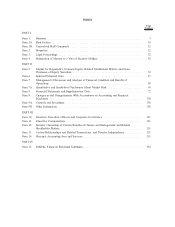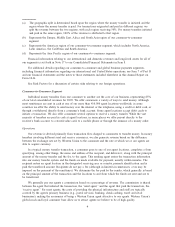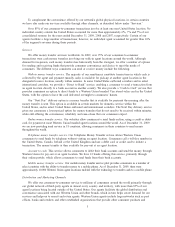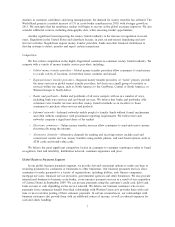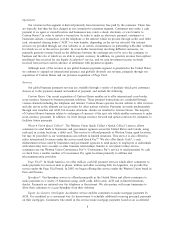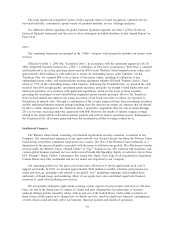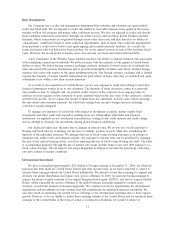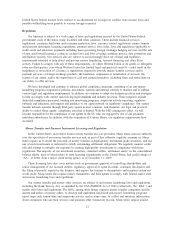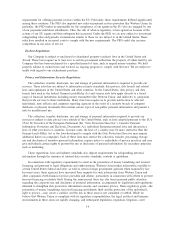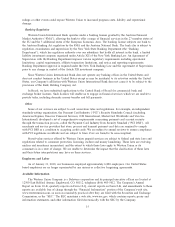Western Union 2009 Annual Report Download - page 21
Download and view the complete annual report
Please find page 21 of the 2009 Western Union annual report below. You can navigate through the pages in the report by either clicking on the pages listed below, or by using the keyword search tool below to find specific information within the annual report.declines in consumer confidence and rising unemployment, the demand for money transfers has softened. The
World Bank projects a modest increase of 1% in cross-border remittances in 2010, with stronger growth in
2011. We anticipate that the remittance market will begin to recover as the global economy improves. We also
consider additional sources, including demographic data, when assessing market opportunities.
Another significant trend impacting the money transfer industry is the increase in regulation in recent
years. Regulation in the United States and elsewhere focuses, in part, on anti-money laundering and anti-
terrorist activities. Regulations require money transfer providers, banks and other financial institutions to
develop systems to detect, monitor and report certain transactions.
Competition
We face robust competition in the highly-fragmented consumer-to-consumer money transfer industry. We
compete with a variety of money transfer service providers, including:
•Global money transfer providers—Global money transfer providers allow consumers to send money
to a wide variety of locations, in both their home countries and abroad.
•Regional money transfer providers—Regional money transfer providers, or “niche” players, provide
the same services as global money transfer providers, but focus on a small group of corridors or
services within one region, such as North America to the Caribbean, Central or South America, or
Western Europe to North Africa.
•Banks and postbanks—Banks and postbanks of all sizes compete with us in a number of ways,
including bank wire services and card-based services. We believe that banks and postbanks offer
consumers wire transfer services and other money transfer methods as an incentive to those
consumers to purchase other services and products.
•Informal networks—Informal networks enable people to transfer funds without formal mechanisms
and often without compliance with government reporting requirements. We believe that such
networks comprise a significant share of the market.
•Electronic commerce—Online money transfer services allow consumers to send and receive money
electronically using the internet.
•Alternative channels—Alternative channels for sending and receiving money include mail and
commercial courier services, money transfers using mobile phones, and card-based options, such as
ATM cards and stored-value cards.
We believe the most significant competitive factors in consumer-to-consumer remittances relate to brand
recognition, trust and reliability, distribution network, consumer experience and price.
Global Business Payments Segment
In our global business payments segment, we provide fast and convenient options to make one-time or
recurring payments for consumers or businesses to other businesses. Our business payments services allow
consumers to make payments to a variety of organizations, including utilities, auto finance companies,
mortgage servicers, financial service providers, governmental agencies and other businesses. We also provide
international business-to-business cross-border, cross-currency payment services as a result of our acquisition
of Custom House in September 2009. We can process payments using the customer’s credit card, debit card,
bank account or cash depending on the service selected. We believe our business customers who receive
payments from consumers benefit from their relationship with Western Union as it provides them with real-
time or near real-time posting of their customer payments. In certain circumstances, our relationships with
business customers also provide them with an additional source of income, as well as reduced expenses for
cash and check handling.
7





